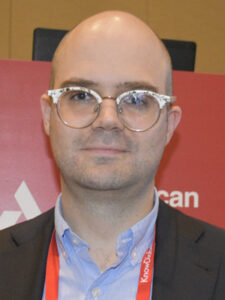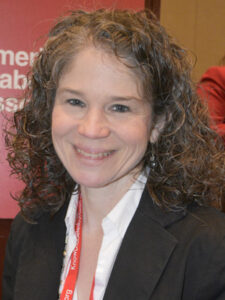
The longest-running study of type 2 diabetes in young people, Longitudinal Outcomes in Youth with Type 2 Diabetes—The TODAY2 Study, is winding down. Results to date show that youth-onset type 2 diabetes is more aggressive than adult-onset disease.
“The burden of complications is accelerating as these individuals transition to young adulthood,” said Philip Zeitler, MD, PhD, Professor of Pediatrics–Endocrinology and Section Head of Endocrinology at the University of Colorado School of Medicine, and Medical Director of the Children’s Hospital Clinical & Translational Research Center. “There are serious personal and public health consequences. Early mortality is already occurring.”
Dr. Zeitler co-chaired a session on Saturday afternoon at the 79th Scientific Sessions that provided the latest look at results from the TODAY2 Study. Rose Gubitosi-Klug, MD, PhD, of Rainbow Babies and Children’s Hospital and Professor of Medicine in the Department of Pediatrics at Case Western Reserve University, co-chaired the session.

The TODAY study of youth-onset type 2 diabetes ran from 2004 to 2011. TODAY2 added five years of continuing treatment and follow-up through 2014. TODAY2 Phase 2, an observation-only follow-up, continues through January 2020.
Complications in youth-onset type 2 diabetes come earlier than in adult-onset type 2 diabetes.
The 12-year cumulative incidence of low-density lipoprotein dyslipidemia was 26 percent, reported Lorraine E. Levitt Katz, MD, of Children’s Hospital of Philadelphia, and 55 percent for hypertension.
The event rate for all adjudicated heart, vascular, and cerebrovascular events was 6.41 per 1,000 patient-years. That’s triple the cardiovascular event rate seen in the Diabetes Control and Complications Trial, which studied an older population with a longer duration of diabetes.

Diabetic kidney disease outcomes are similarly accelerated in youth-onset type 2 diabetes. Half of the TODAY participants had diabetic kidney disease markers, 40 percent with microalbuminuria and 11 percent macroalbuminuria. Both were associated with A1C levels of 8 percent and higher, said Petter Bjornstad, MD, Assistant Professor of Pediatrics-Endocrinology at the University of Colorado School of Medicine.
“The diabetic kidney disease burden in youth-onset type 2 diabetes appears to accelerate during the transition to young adulthood,” Dr. Bjornstad said.
Neil H. White, MD, Professor of Pediatrics at Washington University School of Medicine in St. Louis, said retinopathy and neuropathy can be expected in youth-onset type 2 diabetes. Fundus photography showed that nearly half of TODAY participants had some degree of diabetic retinopathy. Loss of glycemic control, which was defined in the study as A1C of 8 percent or higher, carries a 19-fold risk for retinopathy, and every percent of A1C increase doubles the risk of progression.

Neuropathy is even more common, with 73 percent of participants testing positive. Loss of glycemic control is again the primary risk factor.
Pregnancy outcomes in patients with youth-onset type 2 diabetes are grim. Of the 236 pregnancies with known outcomes, 12 percent ended in miscarriage, 3.8 percent in stillbirths, and 9.7 percent in unknown losses, reported Jeanie B. Tryggestad, MD, of the University of Oklahoma Health Sciences Center. Of the live births, 23.7 percent were pre-term, more than double the expected pre-term rate. The average birth weight was 2,138 grams, well below the typical 3,389 grams. Macrosomia was seen in 18.9 percent and very low birth weight in 15.9 percent, double reference study levels.
Neonatal hypoglycemia was reported in 28.7 percent of newborns, respiratory distress in 14 percent, shoulder dystocia in 3.1 percent, cardiac anomaly in 8.5 percent, and other complications in 12.2 percent. These rates are two to 19 times reference study levels.

A third of mothers were hospitalized versus an expected 14 percent. Preeclampsia was seen in 18.1 percent, hypertension in 37.5 percent, microalbuminuria in 7.5 percent, and A1C of 8 percent or higher in 32.5 percent.
“Type 2 diabetes is much more severe in younger individuals than in adult-onset disease,” Dr. Tryggestad said.
[gap height=”40″]